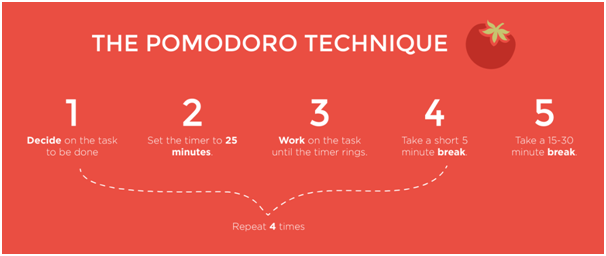Breaking Barriers: How to Beat Writer’s Block
The creative industry has a common enemy: the empty canvas, the blank page, whatever you want to call it. Writers, of course, are no exception to this—even freelance writers. Sometimes, you feel like you can write thousands of words an hour, but there are days when it’s difficult to put your name on paper, so to speak.
Luckily, there are some ways to break through that block.
Force Your Way Through
Sometimes, creative blocks are due to an overload of information or distraction. It’s hard to focus on one thing if there’s so much going on around you or in your head.
One way to combat this is through The Pomodoro Technique, a time management method that disciplines the doer to focus on one task for 25 minutes straight (a “pomodoro”) with no distractions. After every pomodoro, take a short break; after four pomodoros, take a longer break.

Now, how does this work for writers? You might be wondering: how can I write something for 25 minutes straight if I can’t even come up with one sentence because of writer’s block?
The idea is to force your way through the block. Just write, even if what you write is completely unrelated to your piece or if it’s just a row of manually typed up “blah blah blah.” You will find that your brain dislikes monotony and will force you to think of something else. It doesn’t have to be perfect or coherent. The point of this exercise is to rid your brain of clutter and to have all of these distractions laid out on paper.
You may even surprise yourself with an idea you didn’t think you could have.
Get Physical
Another way to get out of the writing funk is to walk away from your piece, literally.
Get up and go for a quick coffee break. Stretch your legs and think of something else for a little while. You could read a chapter of a book, play a little mobile game, maybe take selfies? Give yourself some room to breathe and then come back to your piece feeling refreshed and maybe a little less stressed about your blank page.

Start in the Middle
It’s a common tip to outline your pieces, to give your piece some structure and fluidity. Outlines can still be difficult to follow though, because some points are hard to tackle, resulting to a skeletal page filled with only subheadings and bullet points.
Don’t fear starting in the middle. Expand the points you feel more at ease and then go back to the difficult parts. If you still find these points quite challenging, find similar articles that talk about your chosen topics and find ways to incorporate those ideas into your own piece.
If your first draft seems incoherent, remember that it’s called a first draft for a reason, no need to panic. There is always time for editing later.
At the end of the day, not every method will work for you. The process of writing online is different for everyone. It’s up to you to decide which tips and tricks suit your style.